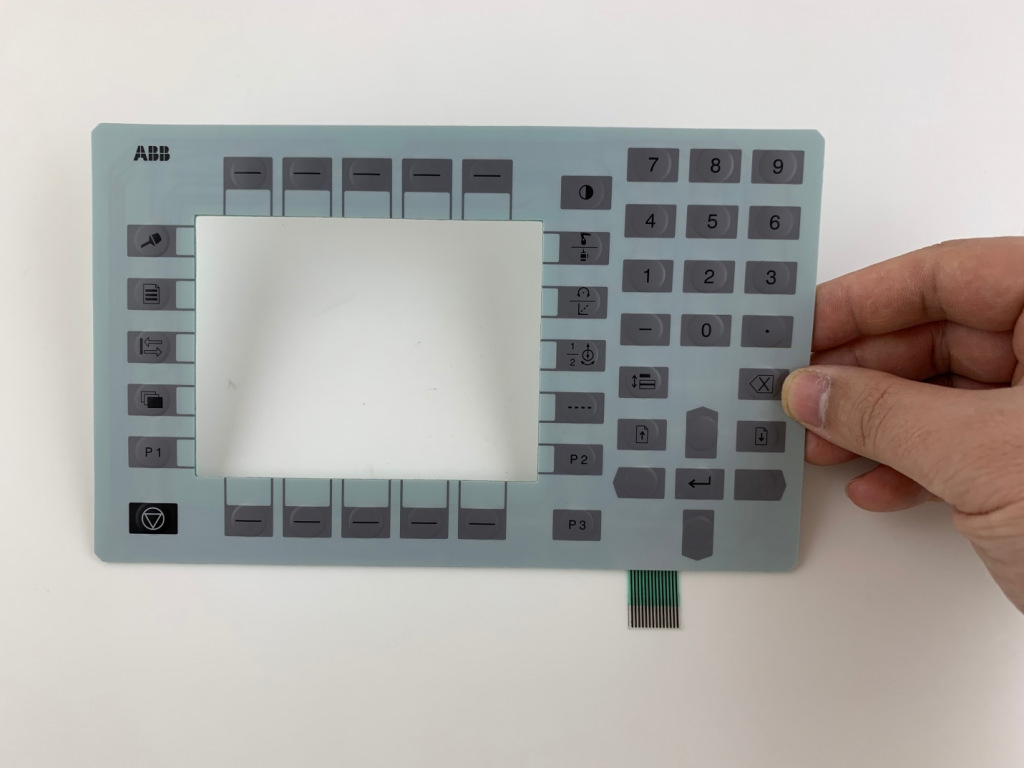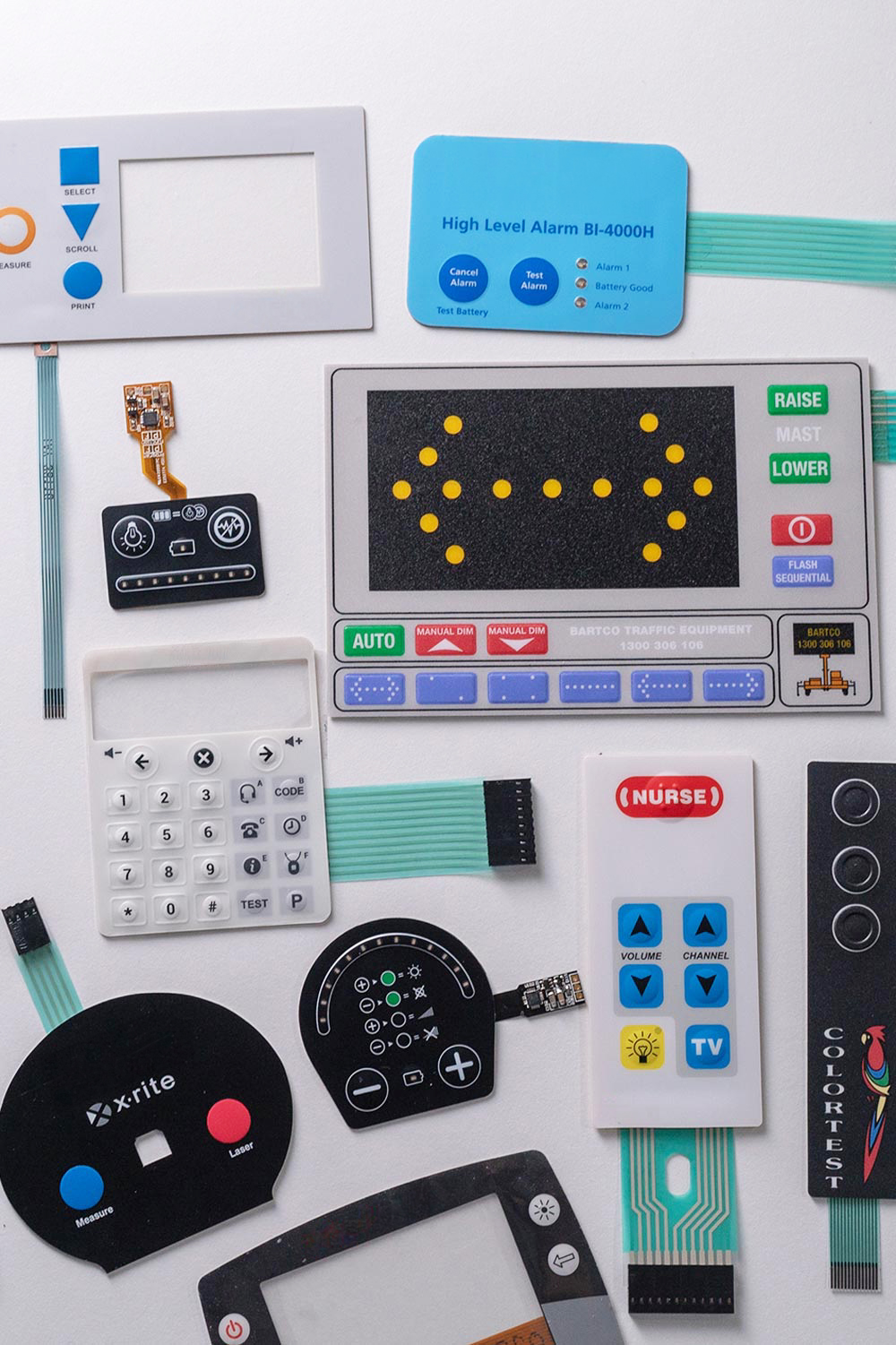Comprehending Membrane Switches Over: The Key to Dependable and long lasting Controls
Membrane layer changes stand for an essential aspect of modern user interface style, blending performance with resilience in various applications. As we explore the details of membrane switches, it becomes clear that their function in improving control systems is both extensive and intricate, raising concerns concerning exactly how finest to utilize their capacities in future developments.
What Are Membrane Layer Switches?
Membrane buttons are an innovative service in the realm of interface modern technology, incorporating capability and design perfectly. These tools offer as an interface in between individuals and digital systems, integrating a number of parts into a portable style. Generally created from flexible, slim layers of materials, membrane layer buttons are designed to reply to touch, making it possible for users to communicate with machinery and digital gadgets effectively.
The main aspects of a membrane button include a printed circuit layer, graphic overlay, and a spacer layer that avoids unexpected activation. The visuals overlay can be customized to show brand identity or individual preferences, boosting aesthetic appeals while making sure functionality. Membrane switches are typically used in numerous applications, including medical gadgets, consumer electronics, and industrial tools, owing to their durability and resistance to environmental variables such as dampness and dust.
Among the essential benefits of membrane switches is their ability to endure wear and tear, making them excellent for high-traffic environments. Furthermore, they are light-weight and require marginal space, permitting ingenious styles in item advancement. In general, membrane changes represent a sensible and efficient selection for modern-day electronic interfaces, weding technology with user-centric layout concepts.

How Membrane Layer Switches Over Work
The procedure of membrane switches over hinges on an easy yet reliable system that translates user input into digital signals. When an individual presses the switch, the top layer deforms, enabling a conductive aspect in the circuit layer to make contact with a matching conductive pad on the bottom of the visuals overlay.
The layout of membrane switches can vary, however they usually integrate domes or tactile components to offer feedback to the user, improving the general experience. The materials utilized in membrane layer switches, such as polyester or polycarbonate, add to their resilience and resistance to ecological aspects, consisting of moisture and dirt. The published circuits are normally enveloped, which secures them from wear and tear over time.

Benefits of Membrane Switches
One of the primary benefits of membrane layer switches is their flexibility in design, allowing them to be personalized to fulfill particular individual requirements and aesthetic needs. This versatility includes different markets, where different shapes, dimensions, and colors can be utilized to boost customer communication and visual appeal.
Additionally, membrane layer switches are known for their longevity. Constructed from durable materials, they are immune to dirt, moisture, and physical wear, which dramatically prolongs their life expectancy contrasted to traditional mechanical buttons. This resilience makes them especially suitable for high-traffic atmospheres and applications requiring longevity.

In addition, membrane buttons provide a structured profile, leading to a thinner layout that can be integrated right into different tools without including mass. This attribute not only boosts the aesthetic appeal however also adds to an extra ergonomic item layout.

Applications of Membrane Layer Buttons
Versatile and straightforward, membrane layer switches discover applications across find out a wide variety of industries, including clinical tools, consumer electronic devices, and industrial devices. In the medical area, these buttons are essential to devices such as diagnostic devices, individual monitoring systems, and mixture pumps, where reliability and simplicity of cleaning are important. Their ability to endure severe atmospheres and preserve functionality makes them suitable for such applications.
In consumer electronics, membrane buttons are made use of in items like microwaves, washing makers, and remote controls - membrane switch. Their sleek style enables for intuitive customer interfaces, enhancing the overall customer experience while supplying resilience and resistance to deterioration
Industrial devices also gains from membrane buttons, especially in control panels for machinery and automation systems. These switches supply defense versus dirt and moisture, guaranteeing regular performance in difficult environments. Furthermore, their customizable features permit makers to customize them to certain operational needs, improving efficiency and capability.
Picking the Right Membrane Layer Change
When choosing a membrane layer switch, it is necessary to take reference into consideration numerous elements that affect performance and viability for particular applications. The key factors to consider consist of ecological conditions, responsive comments, durability, and design specifications.
First, examine the operating environment; switches exposed to moisture, chemicals, or severe temperatures require details materials to guarantee longevity and functionality. Next off, review the need for tactile feedback. Depending on individual interaction, some applications might take advantage of a tactile reaction to verify activation, while others might like a non-tactile style for aesthetic reasons.
Toughness is an additional vital element; membrane buttons ought to be made to stand up to frequent usage, effects, and abrasion. Ensure the chosen button can endure the anticipated lifecycle, particularly in high-usage circumstances.
Verdict
Finally, membrane layer switches over function as important components in the layout of resilient and reputable control systems throughout different markets. Their compact design, combined with robust construction and customizable attributes, improves user communication while guaranteeing longevity popular atmospheres. The versatility of membrane layer switches over enables customized options that meet details operational requirements, strengthening their value in modern-day technology. membrane switch. As sectors remain to evolve, the value of incorporating effective membrane switch remedies can not be overemphasized.
Membrane layer changes stand for an essential element of modern user interface layout, blending functionality with resilience in numerous applications.Membrane switches are an innovative service in the world of user interface modern technology, incorporating capability and layout flawlessly. Typically created from versatile, slim layers of products, membrane buttons are developed to respond to touch, making it possible for customers to communicate with equipment and electronic devices efficiently.
The layout of membrane switches check out this site can vary, however they often include domes or responsive elements to supply responses to the user, enhancing the general experience.In final thought, membrane layer switches over offer as crucial elements in the layout of trusted and long lasting control systems throughout different industries.